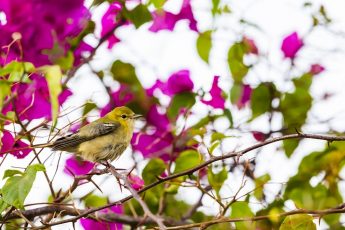As the Sun creeps closer to the horizon bringing with it more and more twilight my mind turns more to spring and the return of our migrants, still some four months away. It seems strange that I’ll miss the return of the Sun this year, as I leave this week for a trade show and then a short trip out west to see my family. When I get back the Sun will be creeping higher and higher in the sky. Counterintuitively the return of the Sun brings with it our coldest weather, perhaps I’ll miss some of that as well.
Right now we’re pretty much a three species town, Ravens with a chance of Hoary Redpolls and a sprinkling of Rock Ptarmigan. (I smashed the High Arctic Christmas Bird Count record this January 2nd by managing to find all three species here in town. Okay that made it sound more like skill than blind luck, but luckily blundering into birds you don’t expect counts.)
Come March or April I’ll start making forays out to the nearby Gyrfalcon aerie to watch them setting up shop. But really things don’t kick into high gear here until the first week of June or so. But then all hell will break loose, and much of the activity will be driven by one of my favourite summer visitors, the Baird’s Sandpiper (Calidris bairdii).
The Baird’s Sandpiperis by far our most numerous shorebird here in Arctic Bay. It arrives around June 10th, give or take depending on weather and snow cover, and immediately starts to cement a relationship. Displaying males can be heard trilling all around the riverine spot I spend my time in the Spring. The peak of this activity is over in about a week, and the birds head upland to nest (for the most part, as some have nested right at the edge of the water.
Once the eggs hatch the family begins the long walk down to the shoreline. This past summer was a very good year for Baird’s and every drive we’d be alerted to the presence of chicks by adults trying to distract our truck away from them.
The chicks grow quickly, and by early August the birds are gathering in larger groups and fueling up. By mid-August they have mostly left. And it happens quickly. Over 3 days of counts in one location my counts went from over 150 to 2. But they have to leave early. These small birds are long distant migrants, following the Sun. Some of these birds, breeding up here at 73 degrees north will winter at the tip of South America, Tierra Del Fuego, 54 degrees south or so.
Like the Sun they’ll soon be beginning their journey here, their summer home. I, for one, can’t wait.











 New writers welcome – please contact us for details.
New writers welcome – please contact us for details.

















Gorgeous, Clare. Looks like there are definite advantages to living up where sandpipers breed (apart from the stunning vistas and ocassional narwhals!)
The fluffy chick photo is priceless!
Lovely! Sorry you miss the “return of the sun”. 🙂
Thanks Mike. There sure are many advantages to living in this magical place. I only wish my Eskimo Curlew photos would have been sharper. 🙂
Thank you Jeremy.
Yeah, its a special time Clare. On the other hand I get to see the sun about 10 days early this year.